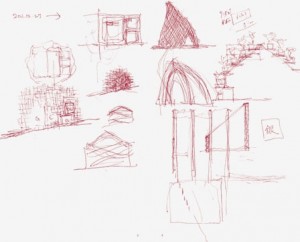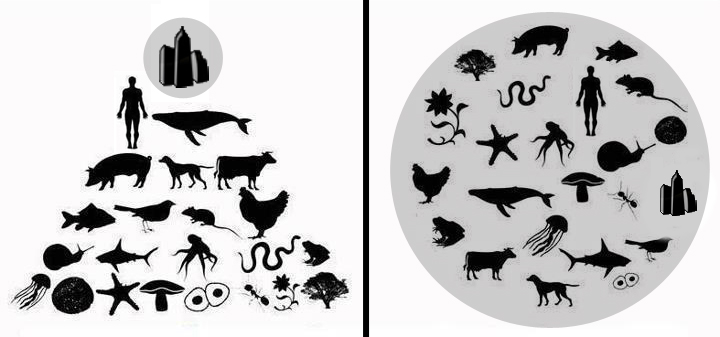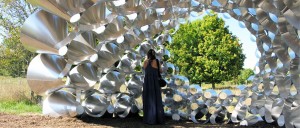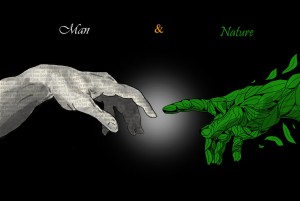The reading, Toyo Ito’s Learning from a Tree, was an intriguing mini-manifesto from the Japanese architect. While his concepts in the opening text felt a bit vague and idealist, the clear references to his ideas in the following case studies embodied his ideologies for architecture of the 21st century. Connections can also be drawn to concepts of architectural systems by relations, as discussed in class.
In his text, Ito, like many other forward-thinking architects, uses modernism as the scapegoat for many problems in contemporary society. He argues that we must move more and more away from the functionalist, pure, lucid geometries and homogenous spaces that dominate our lives and, by learning from the tree, restore a vivid and rich humanity. The tree is a very strong metaphorical relation that he constantly refers to. He says that architects today must not just build sustainably, but humans must sense the nature that they are a part of through the buildings they live in. The integration of nature and architecture that is prominent in Asian cities should be taken to the form of a highrise. “Architecture like a tree that spreads its branches widely.” He refers to a tree extending vertically and horizontally to its physical effect to photosynthesize, and says that architecture must adopt a similar fractal shape. Architecture should still be based on simple rules and geometry, but should be composed with a complex order, much like that of a tree. With this fractal geometry, inside/outside boundaries are blurred, resulting in creating ambiguous, adaptable spaces in architecture. In addition to obvious environmental relations, such as the need to constantly be open to the environment, it was the difference between atmospheric and disturbed relations that struck me as a key paradox. Toyo Ito is a strong believer that architecture must “not be unequivocally decided, but begin with a loose image that is gradually clarified by repeating various simulations.” He again returns to the tree, mentioning that through studies with biologists he discovered that a certain tree’s growth is not just based on its DNA, but also with interrelations with its surrounding environment. This repeated feedback between the tree and the environment, which defines its evolving shape/role is a strong atmospheric relationship. Having said this though, it is also important to note that each tree in nature, as he says, egotistically insists on its presence so as to maintain dominance over others (a disturbed relation). He compares this inner fight to nations, corporations, and people in capitalism. The main difference is that while the tree has this ego to put itself above others, unlike capitalism, it succeeds through interrelations with its immediate environment and the ability for change within its thick roots. The balance of atmospheric (interrelating) and disturbed (destructive) relations can therefore be drawn to architecture. How does our architecture of the 21st century accommodate for the two in tandem? If we must remove ourselves from the modernist machine, how will our new capitalist trees survive? These are questions Toyo Ito has for the next generation of architects, but he has already started to answer them, no better than in the example of his Sendai Mediatheque, a project which he claims changed his views on architecture.
The Sendai Mediatheque is a very apt case for Ito’s manifestos as he confesses that even years after the completion of the building, he feels that the building is “eternally under construction”, like the metaphor of the tree, that can adapt and interrelate with its environment, or in the case of the Mediatheque, its users. The lack of a fixed program gives the building a never-ending sense of evolution, adaptation, and mystery. As he puts it well himself, “architecture without an archetype is for me ideal architecture.” These themes of eternal construction and incompleteness have inspired me in my personal work and research this term at IaaC. Working in the wind ‘social’ energy studio, we are focused on integrating our low-frequency piezo energy harvester device with Valldaura’s trees. Our aim is to use the energy produced on site to emit sounds to attract a host of birds, insects and small mammals to a specific tree. We hope to create a network of such trees, and through the attraction of native species back to the Valldaura, promote a system of controlled pollination in the area, which from our research, is seriously lacking. At the moment the design of our product is too homogenous, it is like a frozen moment of a myriad of possibilities to enhance wind flow through our device. Our goal therefore is to leave this archetype and instead focus our study on adaptable forms, concepts, and materials. Much like Ito’s Mediatheque that doesn’t have a fixed program, our device will not have a fixed shape or fixed tree it will be interrelating with. Our aim is to create a highly integrated and advanced product (with a certain ego) that succeeds due to its ability to play our various simulations due to its loose image and fractal shape. Embraced by Valldaura’s society and eternally under construction. Ito would be proud, I hope.





